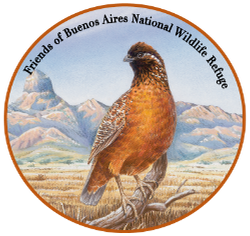Among Friends 28 April 2021 White-faced Ibis
by Walt Anderson
Today’s Among Friends features one of the most fascinating of the migrant birds to visit the area, the White-faced Ibis. It comes through the Buenos Aires Refuge on migration, stopping by standing water areas such as Aguirre Lake, Grebe Pond, and Arivaca Cienega. Of course, drought years greatly reduce suitable habitat on the refuge, but if you add water, they will come.
There are 33 species of ibises worldwide, ranging from the flashy Scarlet Ibis to the endemic Madagascar Ibis and the highly endangered Crested Ibis of Japan. Their closest relatives are the spoonbills.

This is the kind of experience that makes migration so special: almost 500 (yes, I counted!) ibises wheeling over Willow Lake in Prescott. The White-faced Ibis breeds in scattered marshlands across the west, mostly in eastern Oregon, Nevada, California, Idaho, Utah, Wyoming, Montana, Colorado, Iowa, Nebraska, the Dakotas, and coastal Texas. It migrates through Arizona in large numbers, with most coming through in April and September. There are some resident populations in the US, but the majority of the birds migrate to Mexico to spend the winter. There is a separate population in South America south of the Amazon Basin and north of cool, temperate Argentina and Chile.
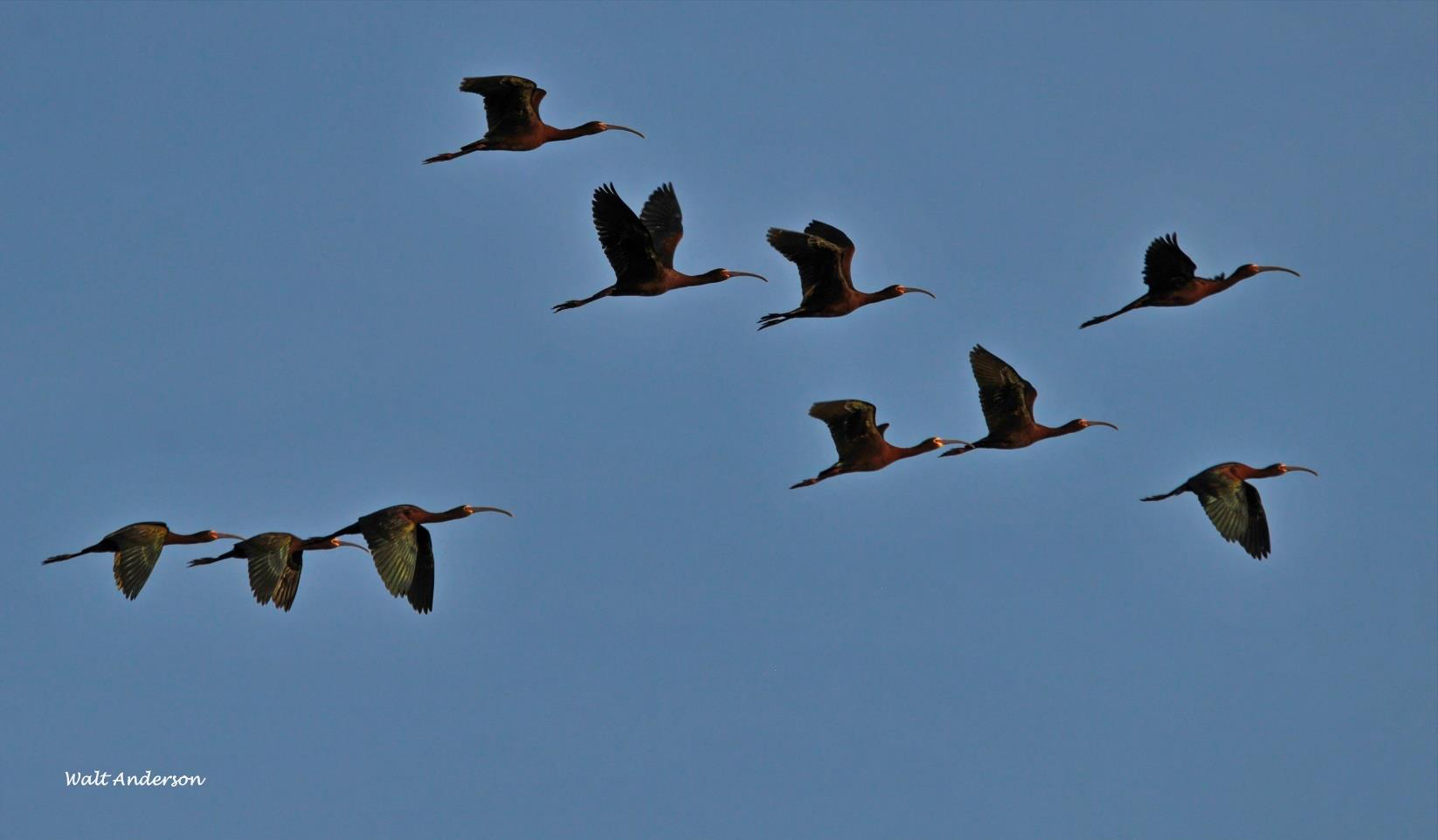
This species suffered near-extinction from eggshell thinning from persistent pesticides and from loss of marshy habitat. DDT was banned in the US in 1972 (thanks, Rachel Carson!), but some populations of ibises in the Great Basin still have residual tissue issues, probably because the nasty stuff is still used in Mexico. Nevertheless, the species has rebounded dramatically after hard pesticides like Aldrin and Dieldrin were banned.

Iridescent glossy greens, bronzes, maroons, and purples adorn these stunning birds. During breeding season, red legs and red facial skin bordered by a fringe of white help distinguish them from their Glossy Ibis cousins found along the Gulf Coast, Florida, and up the Atlantic coast a bit. The Glossy’s range also includes much of Europe, Africa, India, SE Asia, Australia, and New Zealand.

This peaceful flock of ibises was photo-bombed by a Snowy Egret and a passing Willet.
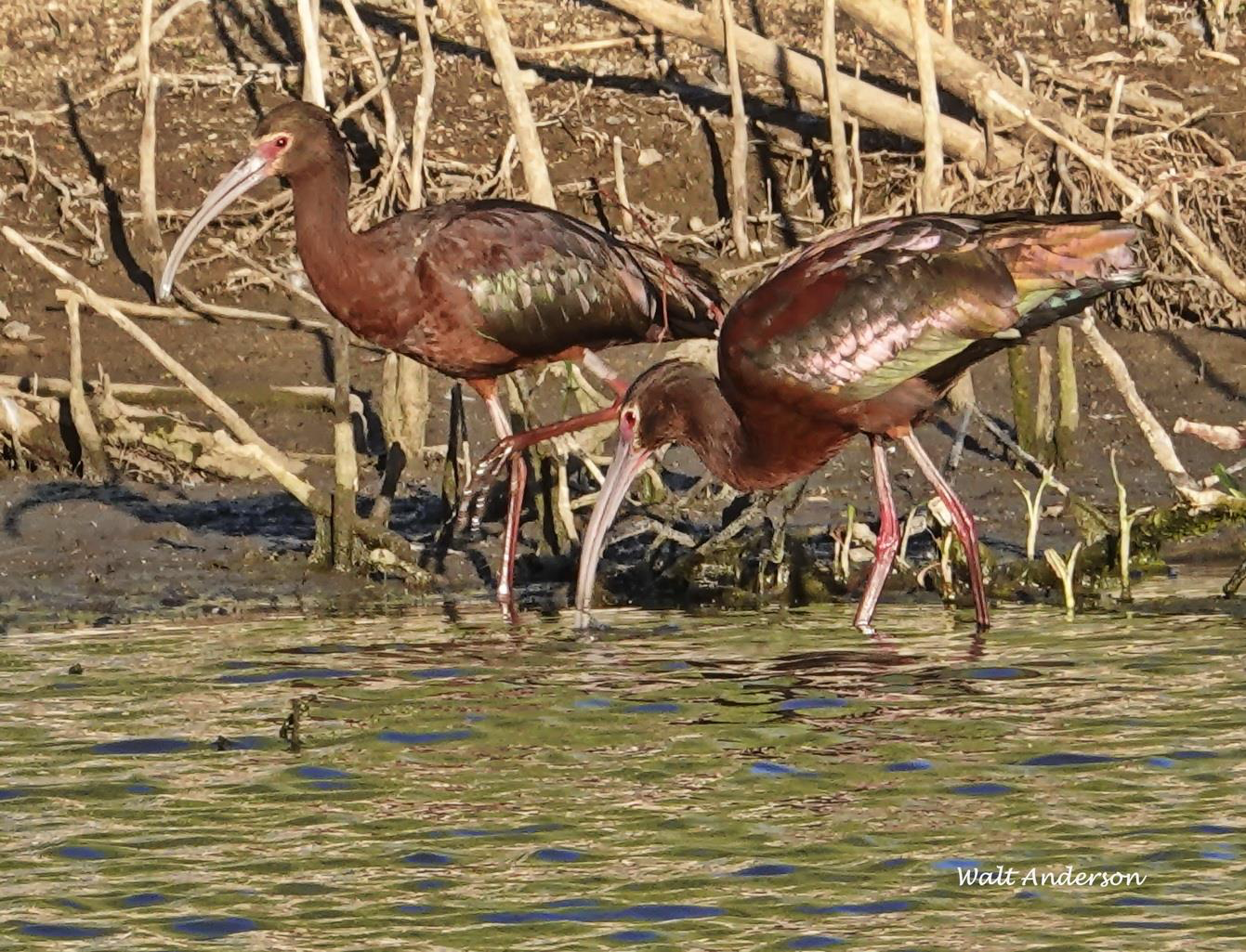
The White-faced Ibis probes in the shallows with its long, decurved (sickle-like) bill, which is richly filled with sensitive nerves that detect prey and enable a quick snatch. Food is typically aquatic invertebrates, such as dragonfly larvae, snails, leeches, mollusks, crayfish, and occasionally frogs and small fish. A few plants and grains are taken at times.
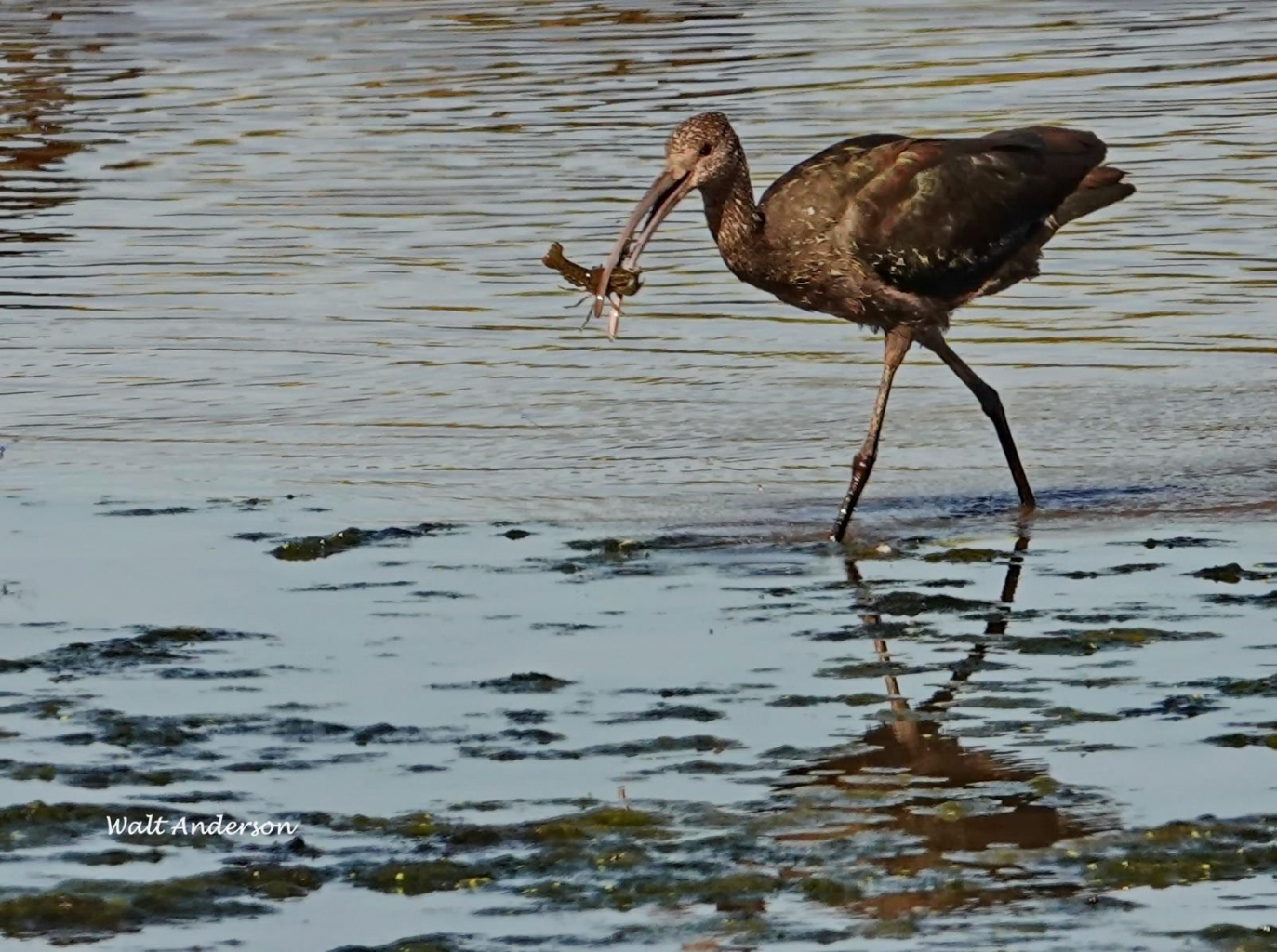
Here a non-breeding bird has succeeded in catching a crayfish. Introduced into Arizona, crayfish are considered noxious competitors or predators of native species, so we are happy to see them in the diet of these migratory birds. Arizona Game & Fish encourages human harvests of this crusty critter by having a year-round season and no bag limit. They also provide recipes for these tasty little “lobsters.”
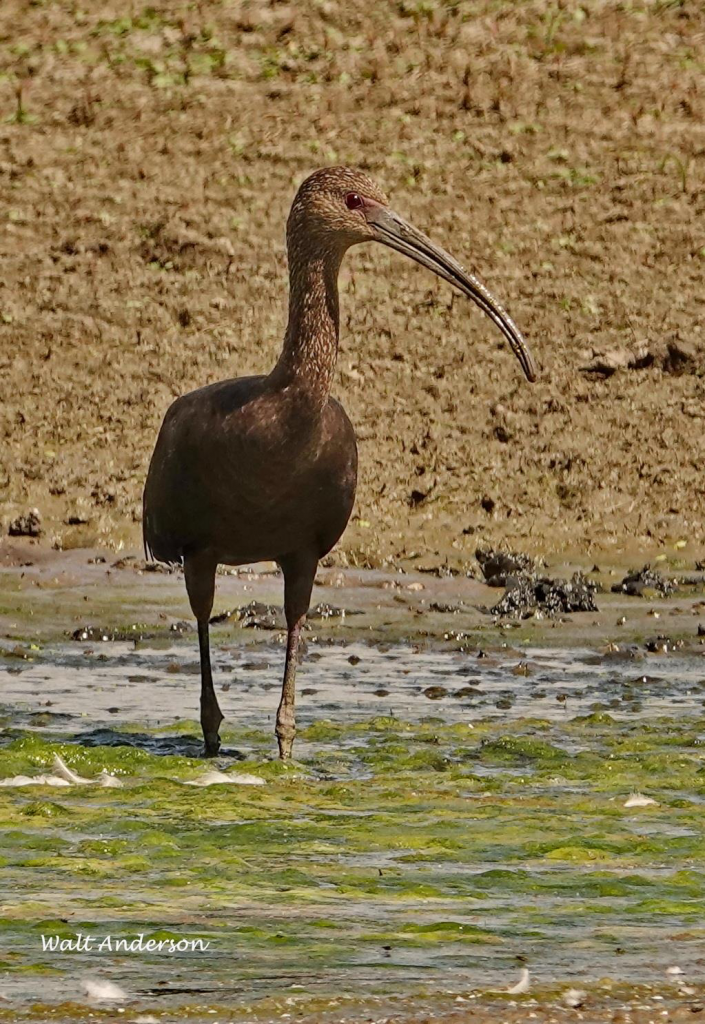
Immature and non-breeding adults lack the contrasting facial patterns and are stripy on head and neck.
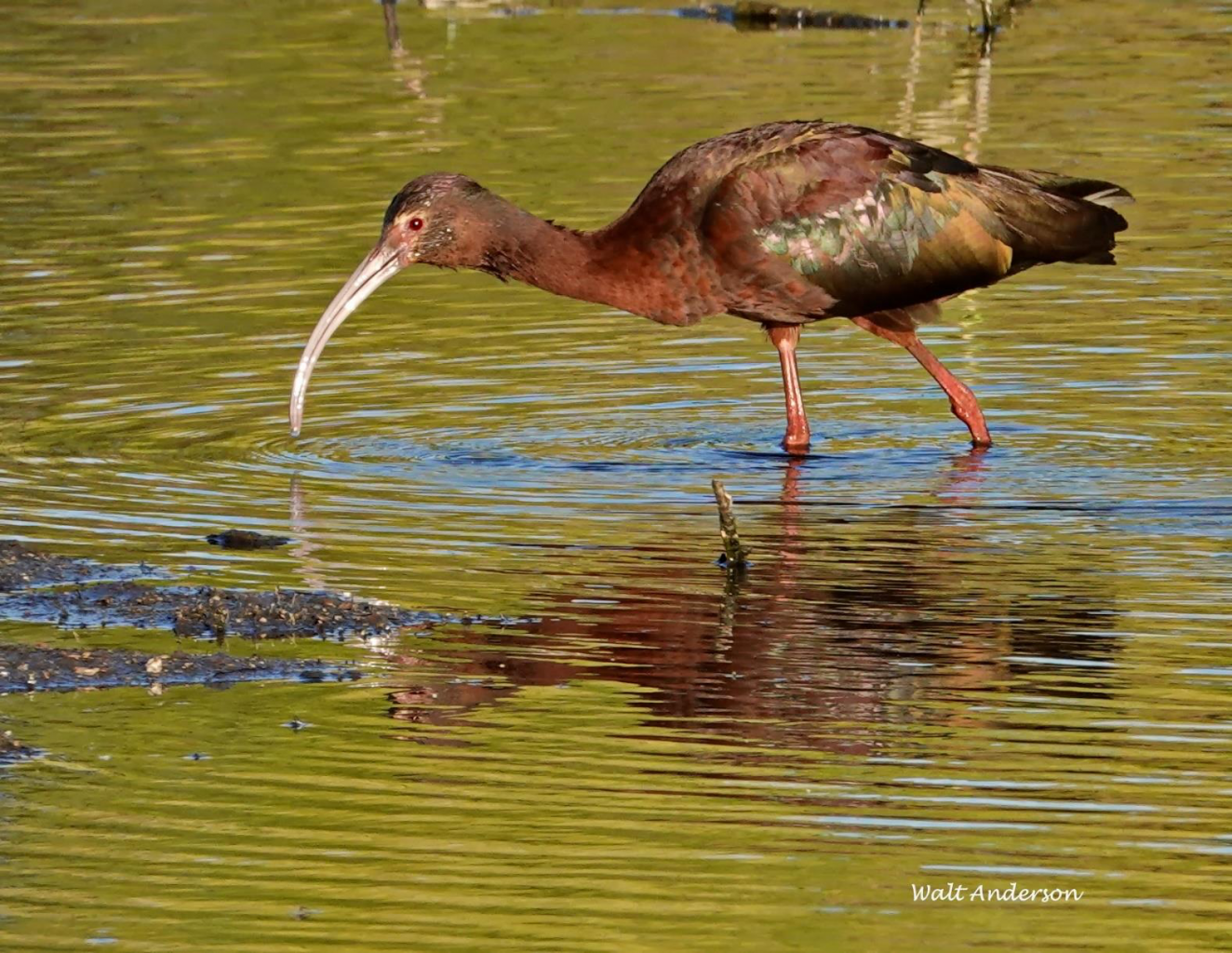
This spring migrant is not yet as bright in its patterns as it will be when it reaches its breeding grounds. Note the green and coppery iridescence in the wings.
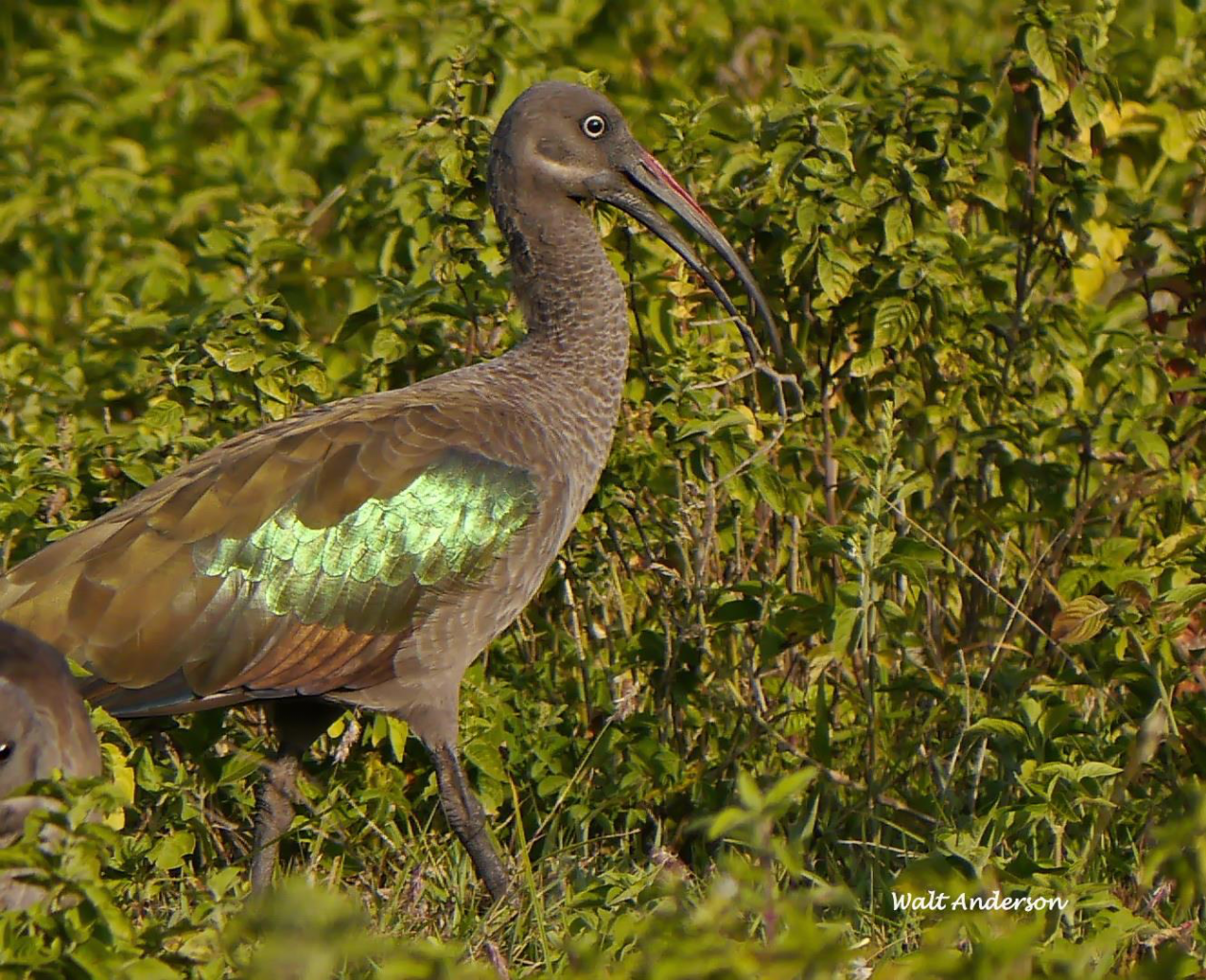
The much more robust Hadada Ibis of Africa also shows green and copper iridescence in its wings. On safari in Tanzania or Kenya, we often hear the rousing morning chorus of these noisy birds yelling “Ha da da!” at the top of their lungs.

We also never miss seeing the dramatic Sacred Ibis on our East African safaris. Egyptians worshipped this species and raised it in large numbers to mummify in sacrificial burial rituals. One necropolis (city of death) found in the old site of Saqqara along the Nile revealed at least 1.5 million mummies of this bird! Ironically, the Sacred Ibis was extinct in Egypt by about 1850; it’s no longer in the state of de Nile. I guess it doesn’t pay to be a religious icon. Rather ibismal behavior, if you ask me.
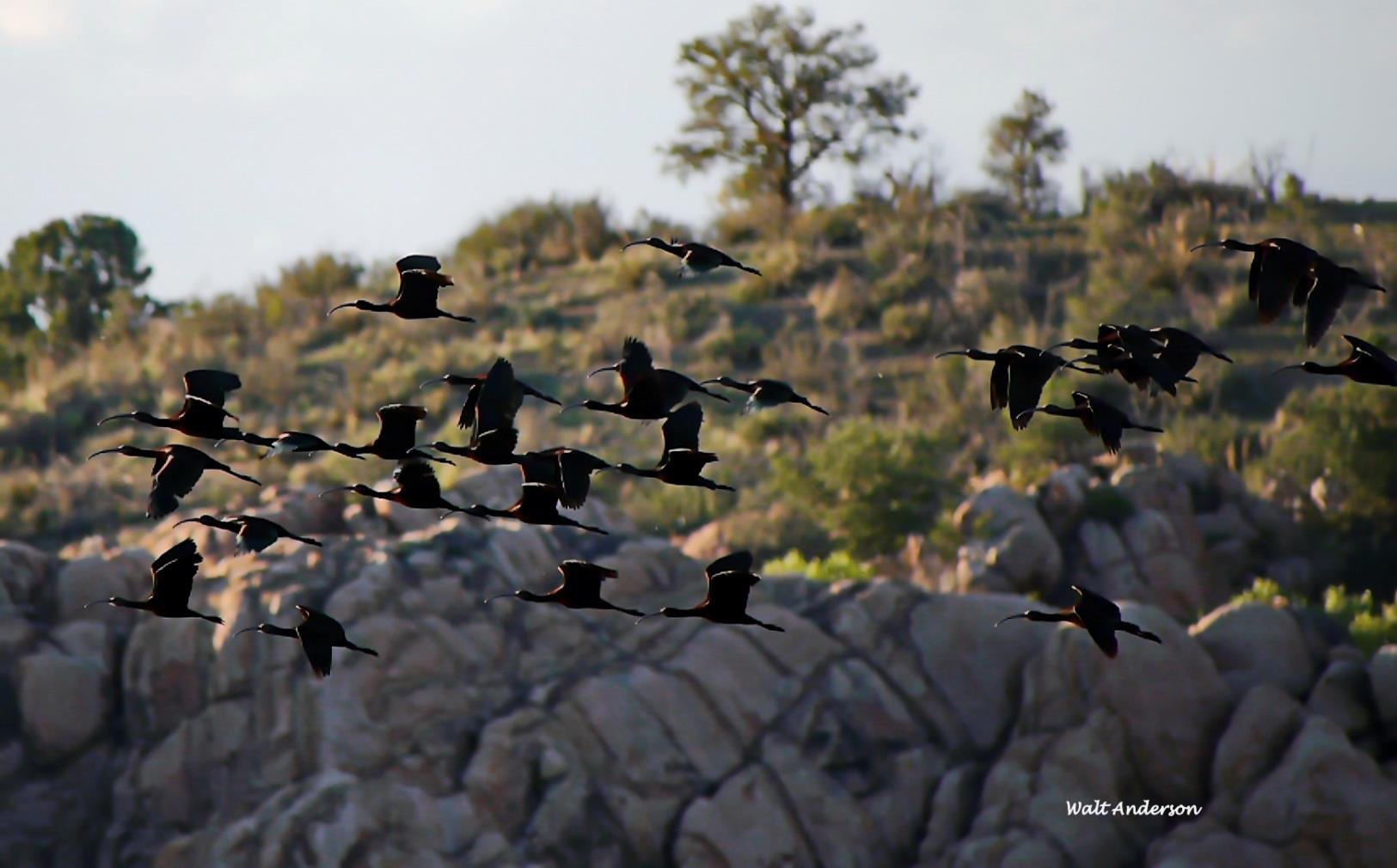
A flock of ibis flying through the Granite Dells. They have benefitted greatly since the City of Prescott purchased the water rights to Watson and Willow Lakes, thereby guaranteeing stopover habitat for these birds on migration. Gilbert Water Ranch is another example of artificial wetlands that serve migrants like these. Wildlife refuges like Buenos Aires are meccas for migratory birds when their specific habitat requirements are met.
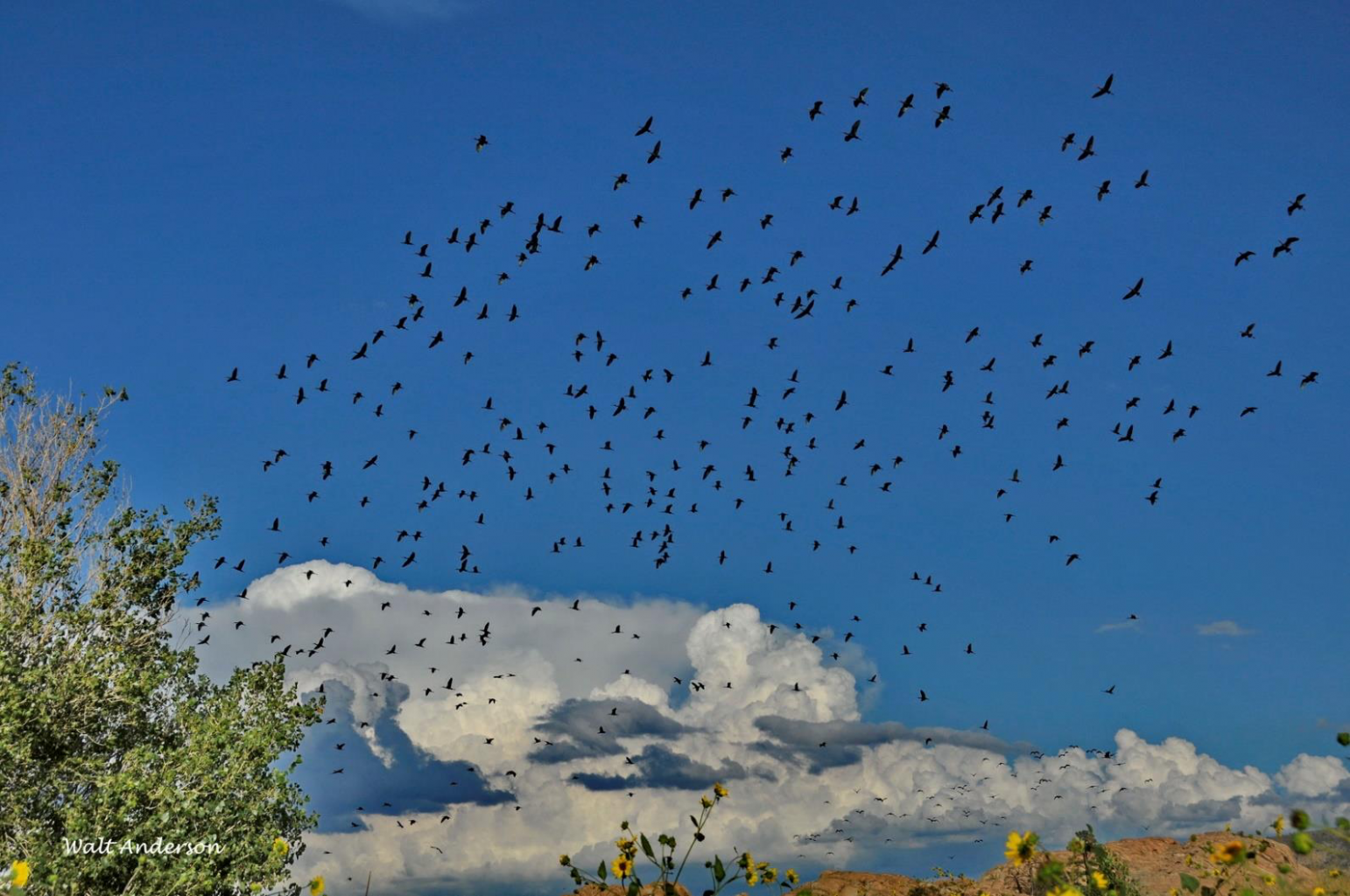
April and November are the best times to visit places like Willow Lake in Prescott where you may be lucky enough to see flocks of these spectacular birds (more than 400 in this photo). But keep alert for other migrants, as at times there may be hundreds of huge American White Pelicans, perhaps thousands of swallows, and the possibility of locally rare shorebirds. You may also be thrilled by sighting Bald Eagles, Peregrine Falcons, Zone-tailed Hawks, or Ospreys. The evening choruses of blackbirds and grackles as they prepare to roost is one of my favorite auditory experiences. Get out there with binocs or scopes, if you can, but leave the family dog at home, as dogs running loose (against city laws) can be very destructive of nesting and resting birds.
